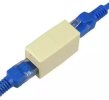Depending on the exact Windows feature, there are four possible phases for when a customization can be applied.
Working backwards in time:
4. Post-Setup (User), after the user has logged on. Most useful for applying HKCU mods.
3. Post-Setup (Machine), after OOBE has finished, but before first logon.
2. specialize pass in Windows install, via Unattended file commands. After the first reboot, but before 2nd reboot into OOBE.
1. Merged into the offline image, by registry or config file integration.
NTLite doesn't support Unattended customization for audit or specialize passes. That goes into fairly advanced topics, since you need to learn how the different Windows install phases work. But it's possible to work your changes into the autounattend.xml after NTLite is done.

